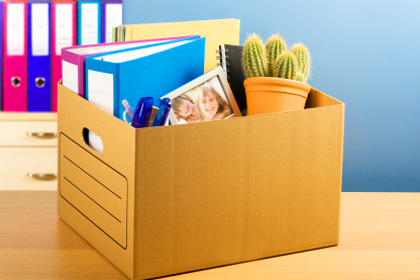 As with any goal, decluttering your home is about adopting the right mindset and then using a consistent and focused approach to tackle one project or space at a time. According to the National Association of Professional Organizers, 80 percent of what we keep we never use. Keeping that sobering stat in mind, here are five easy steps you can apply to any space you want to declutter:
As with any goal, decluttering your home is about adopting the right mindset and then using a consistent and focused approach to tackle one project or space at a time. According to the National Association of Professional Organizers, 80 percent of what we keep we never use. Keeping that sobering stat in mind, here are five easy steps you can apply to any space you want to declutter:
1. Identify and group similar items together. To quickly sort through items in the space, use labeled bags or boxes, with categories such as Keep, Toss, Donate, Sell, Move to Another Room, Store.
2. Decide what to get rid of. When debating whether or not to jettison household items, consider asking yourself (and then answering honestly) the following questions:
Have I used this item in the past year?
Do I have a specific reason to keep it?
If it’s broken, is it worth fixing?
Would it be difficult or expensive to replace it?
3. Create zones within your targeted decluttering area to store like items together. For instance, in your kitchen store all of the coffee-making supplies together.
4. Select containers to fit the measurements of your items and their corresponding storage zones. During this step, it is important to measure spaces before purchasing the containers.
5. Maintain the organized space you’ve created. For this most important step, here are a few guidelines to follow:
Set a schedule for maintaining the space.
Ask a friend to hold you accountable.
Don’t put it down, put it away.
Educate your family on how to use and maintain the organized space.
As an added bonus, here are some specific tips for decluttering five common problem areas in your home. Try implementing one tip per day for the next week — at the end of the week you will be amazed at the progress you have made!
6. Sort mail over a recycling bin. With all of the "to dos" you have to deal with each day, it is easy to see how mail can begin to pile up. Get in the habit of sorting your mail standing over a recycling bin. Sounds simple, but you will be astonished at how it reduces those unsightly piles of paper in your entryway.
7. Make items in your kitchen more accessible. How often do you have to dig through kitchen cabinets to find what you are looking for? To save time and preserve your sanity, install pull-out drawers and lazy Susans to make kitchen and pantry supplies easier to reach with little effort. Your kitchen will be more organized and items will be easier to snatch in a jiffy.
8. Switch to online bill pay. Switching to online bill pay will cut down dramatically on the amount of paper floating around your house. Many vendors offer online bill pay options, as do many banks, but be sure to read the fine print to avoid hidden surcharges. Bill pay only takes 30-60 minutes to set up.
9. Install hooks in your kid’s room. Is your child's bedroom floor carpeted ... with his clothes? Thought so. Hooks are one of the most overlooked — and effective — of organizing solutions, and they are perfect for a kid’s bedroom. Install the hooks at the appropriate level, and your child will be able to hang items up all by himself. Isn’t it wonderful when the kids can help out?
10. Use a shared calendar. Declutter your brain by setting up a calendar that every family member can access. Two of my favorite calendars are Cozi and Google Calendars.
 To read more tips from Innovatively Organized and organizing and productivity expert Elizabeth Bowman, check out the Innovatively Organized blog, where new tips and tricks are posted regularly. Register for the Innovatively Organized webinar Get Organized and Save Time: 12 Tips to Start the Year Right, at noon on Friday, January 6.
To read more tips from Innovatively Organized and organizing and productivity expert Elizabeth Bowman, check out the Innovatively Organized blog, where new tips and tricks are posted regularly. Register for the Innovatively Organized webinar Get Organized and Save Time: 12 Tips to Start the Year Right, at noon on Friday, January 6.
Innovatively Organized is a Seattle-based organizing and productivity company that provides effective organizing solutions for busy professionals, teams, and families to better manage their time, increase productivity, and gain control of their spaces.









